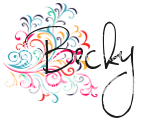I began phasing out the reading program that our school had always traditionally used... You know the one. The students are required to read a specific range of text and then take a comprehension test for everything they read. Books were selected based on the number of points a student could achieve, and not by how interested they were in the text. You could see the dread in their eyes when reading time came. It was heart-breaking to see the joy of reading slowly leeched away from my kids, one text at a time.
Instead, we started reading for... FUN. Shh! I know. It's a revolutionary idea in our test crazed educational system. I let my students bring small pillows to school so they could read around the room. There was a rug and floor cushions in my THIRD GRADE room! I'll admit that I felt kind of like an oddball stepping away from the tried and true system. And, I had more than one moment of doubt and fear about my students' success in this slightly less structured environment.
But, after a short time I noticed that my kids were actually looking forward to reading. They were more engaged in the texts they were reading. In fact, they were constantly trying to discuss their books. In order to make sure that students were managing their time effectively, I created a quick reflection tool for my kids to use.
After my students finish reading, they complete a daily book note. This is just a short summary of what they've read for the day. After they finish their book note, the students reflect on the reading time for the day. I printed these little mini-posters and hung them up in my room for students to use.
The students earn one point for each question that they can answer "yes" to each day. They add their points together for their daily total. The book notes are stored in a manila folder in the group's book basket. At the end of each week, I collect the Book Notes and review them to assess my students' understanding. They're also greet discussion starters for student conferencing!


R.CCR.2, R.CCR.10, RL.3.2, RL.3.10, RI.3.2, RI.3.7, RI.3.10, RF.3.4, W.3.2d, W.3.10, SL.3.1, SL.3.2, L3.2
I also use a variety of other reading tools in my classroom including graphic organizers, flip books, and other printable reading tools.















No comments:
Post a Comment